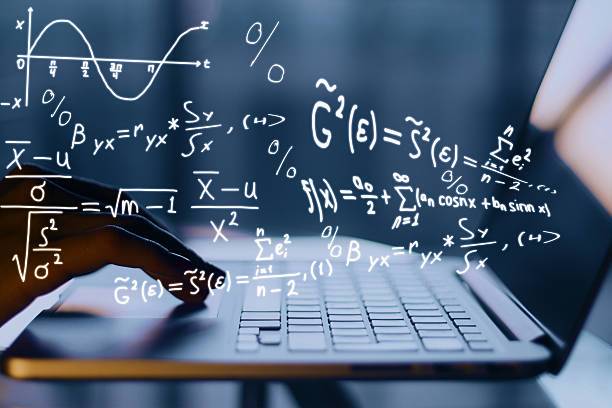Founders Of Revolutionary Formulas and Kinematic Equations
The kinematic equations, as foundational principles in physics describing the motion of objects, do not have specific “founders” in the traditional sense like some scientific theories or laws. Instead, they evolved over time through the work of numerous physicists and mathematicians who contributed to understanding motion and developing mathematical formulas and frameworks to describe it.
Evolution and Development
- Early Contributions: The study of motion can be traced back to ancient times with figures like Aristotle, who proposed theories on motion and mechanics. However, significant advancements began during the Renaissance and later periods with scientists such as Galileo Galilei and Johannes Kepler.
- Galileo Galilei (1564-1642): Galileo is often credited with laying the foundation for modern kinematics. His experiments with inclined planes and falling bodies led to observations and measurements that challenged Aristotle’s ideas about motion. Galileo’s work emphasized the concept of uniform acceleration due to gravity and the independence of horizontal and vertical motion components.
- Isaac Newton (1643-1727): Newton’s contributions were pivotal in formulating the laws of motion and calculus-based mechanics. His work, especially in his seminal work “Philosophiæ Naturalis Principia Mathematica” (1687), provided a rigorous mathematical framework for understanding motion, including the derivation of equations linking acceleration, velocity, and displacement.
Impact on Science
- Mathematical Formulation: The kinematic equations provided a systematic way to mathematically describe motion, enabling scientists and engineers to make accurate predictions and calculations. This laid the groundwork for further developments in mechanics, dynamics, and eventually, modern physics.
- Scientific Method: The development of kinematic equations contributed to the establishment of the scientific method, where observations and experiments are used to formulate and refine theories and laws. It exemplified the importance of empirical evidence in validating scientific hypotheses.
- Technological Advancements: Understanding motion through kinematic equations has been crucial in the development of technologies such as transportation, robotics, and aerospace engineering. These equations are used to design vehicles, plan trajectories, and optimize processes in various fields.
Modern Applications
Today, kinematic equations remain essential tools in physics education and scientific research. They are used extensively in fields like astrophysics, biomechanics, and materials science. Advances in computing power have allowed for more complex simulations and analyses based on these fundamental principles.
In summary, while the specific founders of kinematic equations may not be identifiable in the traditional sense, their development was driven by a progression of scientific inquiry and empirical evidence over centuries. Their impact on science is profound, providing a framework that continues to underpin our understanding and application of motion in the natural world and beyond.
- Newton’s Law of Universal Gravitation
- Founder: Sir Isaac Newton
- Year: 1687
- Country: England
- Formula: F=G⋅m1⋅m2r2F = \frac{{G \cdot m_1 \cdot m_2}}{{r^2}}
- Impact: Revolutionized celestial mechanics, explaining planetary orbits and the motion of objects under gravity.
- Einstein’s Theory of General Relativity
- Founder: Albert Einstein
- Year: 1915
- Country: Germany/Switzerland (later USA)
- Formula: Field equations Rμν−12Rgμν=8πGc4TμνR_{\mu \nu} – \frac{1}{2} R g_{\mu \nu} = \frac{8 \pi G}{c^4} T_{\mu \nu}
- Impact: Provided a new understanding of gravity, explaining gravitational waves, black holes, and the curvature of spacetime.
- Einstein’s Mass-Energy Equivalence
- Founder: Albert Einstein
- Year: 1905
- Country: Germany/Switzerland (later USA)
- Formula: E=mc2E = mc^2
- Impact: Demonstrated the equivalence of mass and energy, leading to nuclear energy and influencing developments in particle physics.
- Maxwell’s Equations
- Founder: James Clerk Maxwell
- Year: 1861-1862
- Country: Scotland
- Formula: Four equations describing electromagnetism
- Impact: Unified electricity and magnetism, predicted electromagnetic waves (light), foundational for modern physics and technology.
- Schrodinger’s Wave Equation
- Founder: Erwin Schrödinger
- Year: 1925
- Country: Austria (later Ireland)
- Formula: iℏ∂Ψ∂t=H^Ψi\hbar \frac{{\partial \Psi}}{{\partial t}} = \hat{H} \Psi
- Impact: Central to quantum mechanics, describes behavior of quantum particles, crucial for understanding atomic and molecular structures.
- Heisenberg’s Uncertainty Principle
- Founder: Werner Heisenberg
- Year: 1927
- Country: Germany
- Formula (conceptual): Δx⋅Δp≥ℏ2\Delta x \cdot \Delta p \geq \frac{\hbar}{2}
- Impact: Limits precision of simultaneous measurements of certain pairs of properties, foundational in quantum mechanics, challenges classical determinism.
- Planck’s Law of Blackbody Radiation
- Founder: Max Planck
- Year: 1900
- Country: Germany
- Formula: B(ν,T)=2hν3c21ehνkBT−1B(\nu, T) = \frac{{2 h \nu^3}}{{c^2}} \frac{1}{{e^{\frac{{h \nu}}{{k_B T}}} – 1}}
- Impact: Introduced quantization of energy, laid foundation for quantum theory, explained distribution of electromagnetic radiation from heated objects.
- Bohr Model of the Atom
- Founder: Niels Bohr
- Year: 1913
- Country: Denmark
- Formula: Describes electrons in atoms orbiting nucleus in discrete energy levels.
- Impact: First quantum model of atom, explained atomic spectra, led to quantum mechanics and modern atomic theory.
- Hubble’s Law
- Founder: Edwin Hubble
- Year: 1929
- Country: USA
- Formula: v=H0⋅dv = H_0 \cdot d
- Impact: Demonstrated universe’s expansion, provided evidence for Big Bang theory, foundation of modern cosmology.
- Gauss’s Law for Electricity
- Founder: Carl Friedrich Gauss
- Year: 1835
- Country: Germany
- Formula: ∮E⃗⋅dA⃗=Qenclosedϵ0\oint \vec{E} \cdot d\vec{A} = \frac{Q_{\text{enclosed}}}{\epsilon_0}
- Impact: Fundamental law of electrostatics, relates electric fields to enclosed electric charge, foundational in electromagnetism.
These formulas represent pivotal moments in scientific history, each contributing significantly to our understanding of the natural world and driving advancements across various scientific disciplines.Want to know more about scientific inventions Read our blog Nikola Tesla

